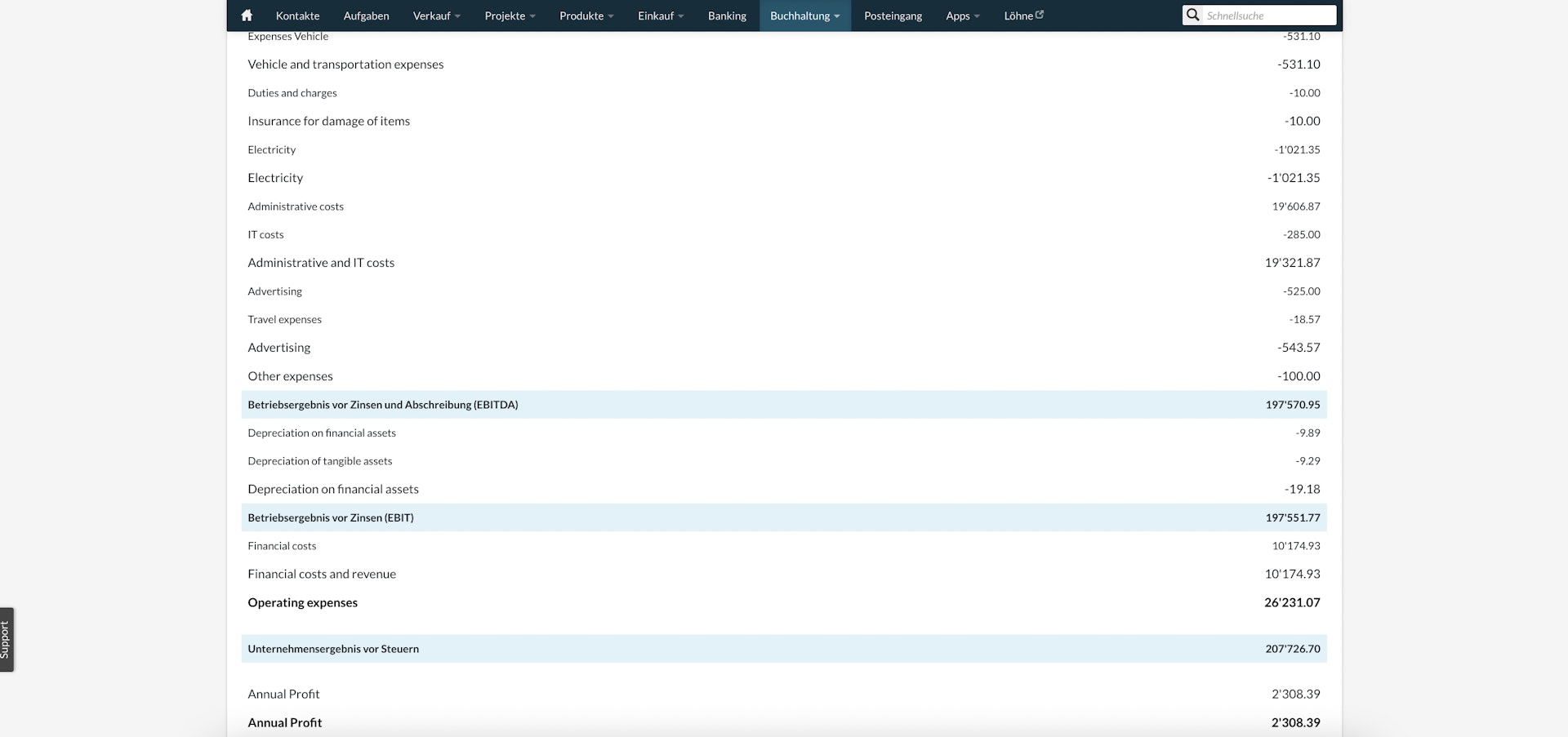Accounting is about numbers, numbers and more numbers. Is that more of a chore than fun for you? As an entrepreneur, it is important to know about the financial situation of your business. One important accounting indicator is EBITDA. In this post, we'll take a closer look at EBITDA and show you how to calculate it.

What does EBITDA mean?
EBITDA is an acronym which stands for "earnings before interest and taxes, depreciation and amortisation" and thus refers to the operating result before the deduction of taxes, interest, and depreciation and amortisation on both tangible and intangible assets. This indicator can be used to assess the profitability of a company.
How is EBITDA calculated?
To calculate EBITDA, use the figures from your income statement.
The formula for calculating EBITDA is as follows:
EBITDA = EBIT + Depreciation and Amortisation
Analogous to the calculation for EBIT, you can choose between the total cost method and the cost of sales method for this calculation.
Total cost method (simplified representation of the calculation of EBITDA):
EBITDA = EBIT + Depreciation and Amortisation
Cost of sales method (simplified presentation of the calculation of EBITDA):
EBITDA = EBIT + Depreciation and Amortisation (fixed assets) - Write-Ups (fixed assets)
What does EBITDA tell you?
EBITDA is a business indicator and shows the operating result before the deduction of taxes, interest, depreciation and amortisation. Compared to EBIT, here, depreciation and amortisation are also deducted in the calculation. Depreciation and amortisation are not liquid, which means that EBITDA closely resembles operating cash flow.
EBITDA can be used to assess the following economic criteria:
- Profitability of the company: Are the financial resources being used efficiently? How successful is the company.
- International comparability: taxes and interest vary from country to country; with EBITDA and EBIT, you can compare your company with others at the international level.
- Creditworthiness of the company: this indicator is often used by banks or third parties to assess creditworthiness.
Even though EBITDA is a noteworthy indicator, one must take into account that it does not show the "real" result. Only when all costs and expenses are deducted – which include taxes, interest and expenses – can the actual result be reported.
What is the EBITDA margin?
The EBITDA margin, like EBITDA itself, is an indicator that is often used to assess the economic situation of a company.
How to calculate the EBITDA margin using a formula
To calculate the EBITDA margin, we set EBITDA in relation to the turnover.
EBITDA margin = (EBITDA / Turnover) x 100
The higher the value, the more profitable the company is and the better financial resources are used to generate profit.
How do you interpret the EBITDA margin?
Basically, the higher the margin, the better the profitability of the company. If the EBITDA margin is high, it shows that relatively low costs are used to generate profit.
If an entrepreneur knows their EBITDA margin, possible measures can be derived from it. For example, if the margin is low, reducing costs may be a possible measure for increasing one's profitability again, and thus also the EBITDA margin.
EBITDA margin examples
Company A has an EBITDA of CHF 100,000 and an annual turnover of CHF 1,000,000. The margin is calculated as follows:
EBITDA margin = 100,000 / 1,000,000 = 0.1 x 100 = 10%
Company B has an EBITDA of CHF 30,000 and a turnover of CHF 60,000. The margin is calculated as follows:
EBITDA margin = 30,000 / 60,000 = 0.5 x 100 = 50%
These examples show that while Company B generates significantly less turnover than Company A, it still achieves a higher EBITDA margin. This means that Company B is significantly more profitable than Company A.
EBITDA in bexio
If you are one of those entrepreneurs who find accounting rather tedious, we have the solution: with the bexio Business-Software, you can easily take care of your administration and accounting: for example, the multi-level income statement, in which the EBITDA is also issued, is created entirely automatically for you. This allows you to assess how profitable your company is at any time. Here, you can find a sample income statement created in bexio.
FAQ: Frequently asked questions about EBITDA
In principle, the higher the EBITDA margin, the more profitable the company is. What determines a "good" margin varies from industry to industry. However, it can be said that an EBITDA margin > 15 percent is a good margin, and a margin should not fall below 3 percent.
Since EBITDA refers to operating profit before taxes, interest, depreciation and amortisation, this indicator cannot be equated with profit. Nevertheless, EBITDA can be used to assess one's own profitability.
While EBIT only adjusts the operating result for taxes and interest, EBITDA also deducts the depreciation and amortisation of tangible and intangible assets. However, both indicators can be used to assess profitability.
Test out bexio now for 30 days free of charge and with no obligation
Test all the features of bexio, the simple business software for your SME administration.





